Mechanical Engineer
1000+ Mechanical Engineer Interview Questions and Answers

Asked in Megha Engineering & Infrastructures

Q. What is a centrifugal pump, and what are its types?
A centrifugal pump is a mechanical device that uses centrifugal force to transport fluids. There are two types: radial and axial.
Centrifugal pumps are commonly used in industrial and domestic applications.
Radial pumps have a volute casing and are used for low flow and high head applications.
Axial pumps have a propeller and are used for high flow and low head applications.
Centrifugal pumps are easy to install and maintain.
They are not suitable for high viscosity fluids or flui...read more
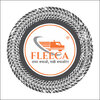
Asked in Fleeca India

Q. What is steering and suspension system in automobile
Steering and suspension system in automobile are responsible for controlling the movement and stability of the vehicle.
Steering system helps in changing the direction of the vehicle while suspension system ensures smooth ride and stability.
Steering system consists of components like steering wheel, steering column, steering gear, and tie rods.
Suspension system consists of components like shock absorbers, springs, struts, and control arms.
The suspension system also helps in ma...read more
Asked in Automation Technical Services

Q. How many types of couplings are used in the steel industry?
There are several types of couplings used in the steel industry for connecting shafts and transmitting power.
Flexible couplings
Rigid couplings
Gear couplings
Grid couplings
Disc couplings
Universal joints

Asked in GKN

Q. How does a transmission shaft work in an automobile?
Transmission shaft in automobiles transmits power from the engine to the wheels.
Transmits power from the engine to the wheels
Helps in changing the speed and torque of the vehicle
Connects the engine to the wheels through the gearbox and differential
Can be a single-piece shaft or a two-piece shaft in some vehicles

Asked in GKN

Q. What is the Ackermann steering system's role in the present scenario?
Ackerman steering system is still widely used in modern vehicles for better maneuverability and turning radius.
Ackerman steering geometry ensures that all wheels follow different turning radii during a turn
It helps in reducing tire wear and improving vehicle stability during turns
Modern vehicles like sports cars, trucks, and even some electric vehicles still use Ackerman steering system

Asked in Megha Engineering & Infrastructures

Q. What is the number of valves typically used in a piping system?
Piping systems typically use various valves, with common types including gate, globe, ball, and check valves, depending on the application.
Gate valves are used for on/off control, ideal for high-pressure systems.
Globe valves provide throttling capabilities, suitable for flow regulation.
Ball valves offer quick shut-off and are commonly used in gas and liquid applications.
Check valves prevent backflow, ensuring fluid flows in one direction.
Mechanical Engineer Jobs




Asked in Tata Motors

Q. What is the function of a steam turbine?
Steam turbine converts thermal energy in steam into mechanical energy.
Steam enters the turbine and expands, causing the rotor to spin
The spinning rotor is connected to a generator, producing electricity
Used in power plants, refineries, and other industrial applications

Asked in Megha Engineering & Infrastructures

Q. Describe stress and strain, and explain their relationship using a diagram.
Stress is the force applied per unit area, while strain is the deformation caused by stress.
Stress is measured in units of force per unit area, such as pounds per square inch (psi) or newtons per square meter (N/m²).
Strain is the ratio of the change in length or shape of an object to its original length or shape.
Stress and strain are related by the material's modulus of elasticity, which is a measure of how much the material will deform under stress.
The stress-strain diagram ...read more
Share interview questions and help millions of jobseekers 🌟

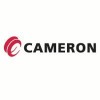
Asked in Cameron

Q. What is broaching and surface finish
Broaching is a machining process that uses a toothed tool to remove material. Surface finish refers to the texture of a machined surface.
Broaching is a process of removing material using a broach tool with teeth that gradually increase in size.
Surface finish is the texture of a machined surface, which can be measured in terms of roughness or smoothness.
Surface finish can be improved by using different cutting tools, adjusting cutting parameters, or using finishing processes l...read more

Asked in Applied Materials

Q. What is MR Braking?
MR Braking stands for Magnetic Resistance Braking. It is a type of braking system used in trains and other vehicles.
MR Braking uses magnetic fields to slow down or stop a vehicle.
It is commonly used in trains as it provides a smooth and efficient braking system.
The braking force is generated by the resistance between the magnetic field and the conductive material on the train's wheels.
MR Braking is also used in roller coasters and other amusement park rides.
It is a safer and ...read more

Asked in Action Tesa

Q. What is the difference between production and manufacturing?
Production is the process of creating goods or services, while manufacturing is the specific process of making products.
Production involves the entire process of creating goods or services, including planning, designing, and delivering.
Manufacturing is a subset of production and refers specifically to the process of making products.
Production can include non-tangible items like software or services, while manufacturing typically involves physical products.
Examples of producti...read more
Asked in Sinclus Agency in Nayara Energy

Q. What is the difference between torquing and tensioning?
Torquing is the application of rotational force to tighten a fastener while tensioning is the application of axial force to stretch a bolt.
Torquing involves twisting a bolt or nut to a specific tightness
Tensioning involves stretching a bolt to a specific tightness
Torquing is used for smaller bolts and nuts while tensioning is used for larger bolts
Torquing is more precise than tensioning
Examples of torquing tools include torque wrenches and screwdrivers while examples of tensi...read more

Asked in Cameron

Q. What is the maximum shear stress theory?
Maximum shear stress theory is a theory used to determine the failure of materials under shear stress.
Also known as Tresca's theory or Guest's theory
States that failure occurs when the maximum shear stress in a material exceeds a certain value
Used in designing materials for ductile failure
Not applicable for brittle materials
Formula: τmax = (σ1 - σ2) / 2
Where σ1 and σ2 are the principal stresses
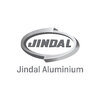
Asked in Jindal Aluminium

Q. What is the NAS value of a servo valve?
Servo valve nas value refers to the National Aerospace Standard (NAS) specification for servo valves.
NAS value is a standard that defines the performance and quality requirements for servo valves used in aerospace applications.
It ensures that servo valves meet specific criteria for reliability, accuracy, and durability.
NAS value is often used as a reference when selecting or evaluating servo valves for aerospace systems.
The NAS value may include parameters such as flow rate, ...read more

Asked in ASC Infratech

Q. How would you approach a project aimed at optimizing energy efficiency?
I would analyze current systems, identify inefficiencies, and implement solutions to enhance energy performance.
Conduct an energy audit to assess current consumption and identify areas for improvement.
Utilize simulation software to model energy flows and predict the impact of changes.
Implement energy-efficient technologies, such as variable frequency drives in motors.
Incorporate renewable energy sources, like solar panels, to reduce reliance on non-renewable energy.
Engage in ...read more

Asked in Kiswok Industries

Q. What is stress and strain, Stress strain graph for ductile material, vernier calipers formula
Stress is the force applied to a material, while strain is the resulting deformation. A stress-strain graph for ductile materials shows the relationship between stress and strain. Vernier calipers formula is used for precise measurements.
Stress is the force applied per unit area on a material, measured in units like N/m^2 or Pa.
Strain is the ratio of the change in length to the original length of a material.
A stress-strain graph for ductile materials typically shows an initia...read more

Asked in Tata Steel

Q. What is the role of a conveyor belt in industrial processes?
Conveyor belts transport materials efficiently in industrial processes, enhancing productivity and workflow.
Facilitates the movement of goods between different production stages, e.g., from assembly to packaging.
Reduces manual labor and minimizes the risk of injury, as workers can focus on more complex tasks.
Improves efficiency by maintaining a continuous flow of materials, such as in automotive assembly lines.
Can be customized for various industries, including food processin...read more

Asked in ARCADIS

Q. How do you calculate the total head required for a pump?
Total head required for a pump can be calculated using Bernoulli's equation
Determine the flow rate required
Calculate the friction loss in the piping system
Determine the elevation difference between the pump and the discharge point
Add the three values to get the total head required
Consider any additional losses due to fittings or valves

Asked in Universal Contractors And Engineers

Q. What are the potential causes of engine starting issues?
Potential causes of engine starting issues include battery problems, fuel issues, ignition system faults, and mechanical issues.
Weak or dead battery
Fuel pump failure
Clogged fuel filter
Faulty spark plugs
Ignition coil issues
Starter motor problems
Broken timing belt
Low engine compression
Asked in Saras 3D

Q. How do you apply tolerance in shaft and hole design?
Tolerance in shaft and hole is achieved by specifying the acceptable range of dimensions for both components.
Specify the desired fit (clearance, interference, transition) between the shaft and hole
Determine the basic size of the shaft and hole
Select the tolerance class based on the required precision
Apply the appropriate geometric tolerances if needed
Consider factors like material properties, manufacturing processes, and assembly requirements
Examples: H7/g6, H8/f7, H9/h9
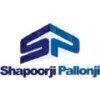
Asked in Shapoorji Pallonji Group

Q. How do you calculate pump head?
Pump head calculation involves determining the pressure required to move fluid through a piping system.
Determine the flow rate of the fluid
Calculate the friction loss in the piping system
Add the elevation difference between the inlet and outlet of the pump
Consider any additional pressure requirements such as for filters or heat exchangers

Asked in Local Company

Q. How do you maintain a large or heavy pump in a pumping station?
Regular maintenance, monitoring performance, lubrication, alignment checks, and vibration analysis are key to maintaining a huge or heavy pump in a pumping station.
Perform regular maintenance checks to ensure all components are functioning properly
Monitor performance metrics such as flow rate, pressure, and temperature regularly
Lubricate moving parts as per manufacturer's recommendations to prevent wear and tear
Check alignment of pump shaft and motor shaft to prevent misalign...read more
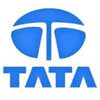
Asked in Tata Sponge Iron

Q. How do you perform fan maintenance?
Fan maintenance work involves cleaning, lubricating, and inspecting the fan components regularly.
Clean the fan blades and housing to remove dirt and debris
Lubricate the bearings and motor to ensure smooth operation
Inspect the belts, pulleys, and other components for wear and tear
Replace any damaged or worn parts as necessary
Check the fan's alignment and balance to prevent vibration and noise issues

Asked in Tata Motors

Q. types of pumps and which pumps are used for which purpose
Types of pumps include centrifugal, reciprocating, rotary, and diaphragm pumps. Each pump is used for specific purposes based on its design and capabilities.
Centrifugal pumps are commonly used for water and sewage systems.
Reciprocating pumps are suitable for high-pressure applications like hydraulic systems.
Rotary pumps are used for viscous fluids like oils and chemicals.
Diaphragm pumps are ideal for handling corrosive or abrasive fluids.

Asked in Anand Nvh Products (p)

Q. What are limits, fits, and tolerances?
Limits fits and tolerances are used in engineering to determine the acceptable range of dimensions for mating parts.
Limits are the maximum and minimum acceptable dimensions for a part
Fits are the range of tightness or looseness between mating parts
Tolerances are the allowable deviation from a specified dimension
Examples: H7/g6, H8/f7, etc.

Asked in Atharva Foundries

Q. What can you tell me about internal combustion engines (IC engines)?
Internal combustion engines are heat engines that burn fuel inside the engine to produce mechanical energy.
IC engines are commonly used in vehicles, such as cars, motorcycles, and trucks.
They work by burning fuel (usually gasoline or diesel) in a combustion chamber to create high-pressure gases that drive a piston.
The movement of the piston is converted into rotational motion, which powers the vehicle.
IC engines can be classified into two main types: spark-ignition engines (p...read more

Asked in Chakr Innovation

Q. What is the method for calculating the circumference of a circle using a measuring tape?
To calculate the circumference of a circle, measure its diameter with a tape and multiply by π (pi).
Use a flexible measuring tape to measure the diameter of the circle directly across its center.
Ensure the tape is straight and not sagging for an accurate measurement.
Once you have the diameter (d), use the formula: Circumference (C) = π × d.
For example, if the diameter is 10 cm, then C = π × 10 cm ≈ 31.42 cm.
Alternatively, if you know the radius (r), you can use C = 2 × π × r.

Asked in Iol Chemicals & Pharmaceuticals

Q. What are the types of mechanical seals, and what is the difference between balanced and unbalanced mechanical seals?
Mechanical seals are of two types - balanced and unbalanced. The difference lies in the design and application.
Balanced mechanical seals have a secondary seal that balances the pressure on both sides of the seal faces, reducing the risk of leakage and wear.
Unbalanced mechanical seals do not have a secondary seal and rely on the pressure difference between the seal faces to maintain the seal.
Balanced seals are used in high-pressure applications, while unbalanced seals are used...read more

Asked in Cameron

Q. Draw a stress-strain diagram of MS and Cast Iron.
Stress-strain diagrams of MS and cast iron.
Mild Steel: linear elastic up to yield point, plastic deformation after that, ultimate strength at fracture point.
Cast Iron: brittle material, low ductility, low yield strength, high compressive strength.
MS has higher tensile strength than cast iron.
MS has higher elongation at break than cast iron.

Asked in Tech Mahindra

Q. Types of sefety? Ans-Safety are three types 1 personal safety 2 General safety 3 Machine sefety.
There are three types of safety: personal safety, general safety, and machine safety.
Personal safety involves protecting oneself from harm or injury.
General safety pertains to the safety of the environment and people around us.
Machine safety involves ensuring that machines are safe to operate and do not pose a threat to workers.
Examples of personal safety measures include wearing protective gear, such as helmets and gloves, and following safety protocols.
Examples of general s...read more
Interview Questions of Similar Designations
Interview Experiences of Popular Companies








Reviews
Interviews
Salaries
Users

















